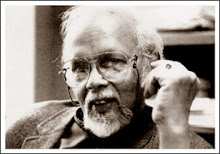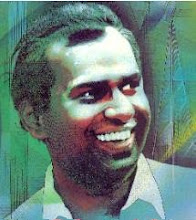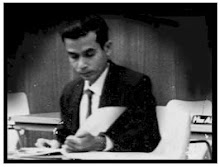Date:04/08/2010
Source: Daily News
The well known theatre man, essayist, novelist and short story writer R. R. Samarakone is no more. I came to know of his death early morning and my mind flashed back to about four decades of an association with him.
When he wrote his Sinhala novel Gekurullo I read it with great interest and obtained his permission to write a film screenplay out of it. I wrote the screenplay with much interest, but due to circumstances beyond our grasp, both of us were not too fortunate to be worth of a producer. Years passed by and we found that the script had been passing from hand to hand. In the '70s RR was employed at the main branch of the Cooperative Department in Union Place, as a translator.
Bilingual background
| |
Having had a good education in both English and Sinhala, RR was an excellent translator. He had more time for his own writing than engaging himself in routine office work in the capacity of a pen pusher. So he took up to writing play scripts, mainly the realistic type where he excelled.
His most popular debut Ahasin Vetunu Minissu was revolved round the town-dwelling young man who comes from the rural sector. Followed by the success of that play, he wrote Idama, which centred round a particular socio political issue of the day, where the question of land and human ownership remains challenged.
Idama was shown, if I remember correct, all round the country and in places unimaginable too to a packed house. RR had a witty use of urban language intermixed with a rural dialect which evoked roaring laughter from the audience.
Influential environs
He had the habit of noting down bits of certain strange utterances, witty sayings, wise cracks and even slang as found in day to day conversation. Whenever the need arose he would fix them or fuse them to his dialogues. This was observed quite well in his most popular Sinhala play Kelani Palama.
Regarding the creative process of this particular play, RR once told me that he had been on the site whenever floods surge and people struggle to exist. He would sometimes be a part and parcel of their experience. But one should not forget that he too had severe criticism leveled against Kelani Palama.
Some opined that RR had only observed the superficial layer of the victims and failed to see the depths of depravity of the victims. One thing I noted in RR is his skill in the narrative form; may it be short play, long play, short story or novel. He was too keen on the craftsmanship. He was largely influenced by the politician and creative writer T. B. Illangaratne.
Ilangaratne inspiration
As a student of Kingswood College - I remember him sharing his experience - he had the habit of watching how Ilangaratne wrote and rehearsed his plays like Handahana, Haramitiya and Manthri Hamuduruwo. Coming to Colombo and working as a translator in CWE he had the chance of meeting playwrights such as Henry Jayasena, Upali Wanasinghe, Dharmasiri Gamage, Sugathapala de Silva and Premaranjith Tilakaratne.
During the early '70s he was often seen at a small restaurant Salaka in Union Place, engaged in conversation fused with much merriment.
Three of his novels were acclaimed as well written and with a vision: Gekurullo, Dehadaka Adaraya and Ek Sabhya Kathavak. He also wrote one or two juvenile narratives, which passed without much notice.
Devotion for novels
I sincerely feel that he would have devoted more time for his short story and novel writing than to other areas of creative writing. But mine is not at all a judgment, but an observation, as I feel that his play scripts too fall into the category of novelist's theatre than the conventionally accepted playwriting, where more happens on the stage.
The creative works of R. R. Samarakone may not have had the chance for a better discourse, as it is an area quite neglected. Perhaps a day would come when RR will be rediscovered. He was also briefly engaged in poetry. But I am not sure whether he had compiled them in to a single anthology.
Like many other dramatists of our country he was never a trained dramatist in the accepted manner. Nor was he blessed by the cultural ministry for a special training in creative communication patterns. But RR struggled hard to be with his well loved audience.
This lack of training perhaps paved the way for hasty productions like Duvili and Ilandariya, both set in the urban sector, a human area which RR knew intimately. But these played lacked the luster one anticipated from a sensitive creative writer. But still the local audience loved RR so much that they had promises which the death inevitably wiped off.
Though the curtain of life had fallen on the final life episode of RR, the trendsetting creative artiste would remain as an epitome of remembrance.



































No comments:
Post a Comment